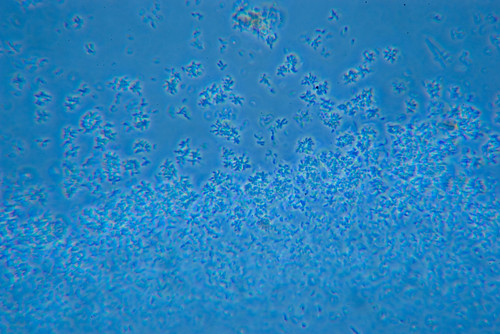
This is the first in a series of studies I'm doing on Darwinian ideas and principles. I'm doing these studies to improve my own understanding of Darwinism, and hopefully you'll learn something too. :) Now, on to the first topic, Replicators.
What is a replicator? A replicator is anything that is capable of self-replication, a.k.a. making a copy of itself. Why is this important? Because replicators are means by which life can form. Our genes are replicators. Now, there are a number of theories that speculate where and how replicators formed, but one of the most recognizable is the "primeval soup" theory (I will examine others in future studies).
In the early days of our planet, chemicals were in abundance. According to Richard Dawkins (Selfish Gene, 1989), some of the possibilities include such simple and frequently-observed molecules as water (H2O), carbon dioxide (CO2), methane (CH4), and ammonia (NH3). Simple molecules such as these were capable of forming based on simple proximity and attraction. For instance, carbon easily attracts, and is joined with, pairs of oxygen molecules to form carbon dioxide. None of these molecules is capable of reproducing itself, hence these are not replicators. More complicated molecules, however, such as amino acid chains, the units that comprise proteins (i.e. alanine C3H7NO2), generally require extra energy to form. Lucky for us, the early Earth had energy in abundance in the form of sunlight.
Experiments have been performed (Dawkins, p. 14) in which chemists placed simple molecules like I mentioned above into an isolated test tube, and subjected the tube to energy in the form of ultraviolet light or sparks of electricity (i.e. lightning), to model the early environment of the earth. After a surprisingly short period of time, they noticed that much more complex molecules had formed in the test tube—including amino acids! Therefore, we have evidence that, in the presence of abundant energy, chemicals bond to form complex molecular structures, such as those that we see around us today. What about replicators, however? What are the chances that a molecule with self-replicating properties could form? The chances are pretty small—most molecules don't exhibit this property. However, we have to remember that we are talking about vast, vast stretches of time. Over the hundreds of millions of years about which we are speaking, even exceedingly improbable events will occur several times. To better comprehend the immensity of time that a replicator had to develop, here's an analogy. Assuming an average life span of 70 years, 1.4 million generations of humans would live for each 100 million years. Over a billion years, 14 million human generations would have lived. In contrast, since Jesus walked the Earth, only 29 human generations have come and gone. Combine all this with the fact that hundreds of millions of chemical reactions naturally occur every day on our planet, and it suddenly doesn't seem all that improbable that a replicator could develop.
Stay tuned for part 2 tomorrow!
Technorati Tags: Darwinism, Neo-Darwinism, replicators, primeval soup, Richard Dawkins, Selfish Gene




2 comments:
Good stuff. Have you ever read Arthur Young's Reflexive Universe? Adds great to old C. Darwin's ideas. He talks about the evolution of consciousness.
I have not read that book, but I will most certainly check it out at my next opportunity! Thanks for the recommendation Don.
Post a Comment